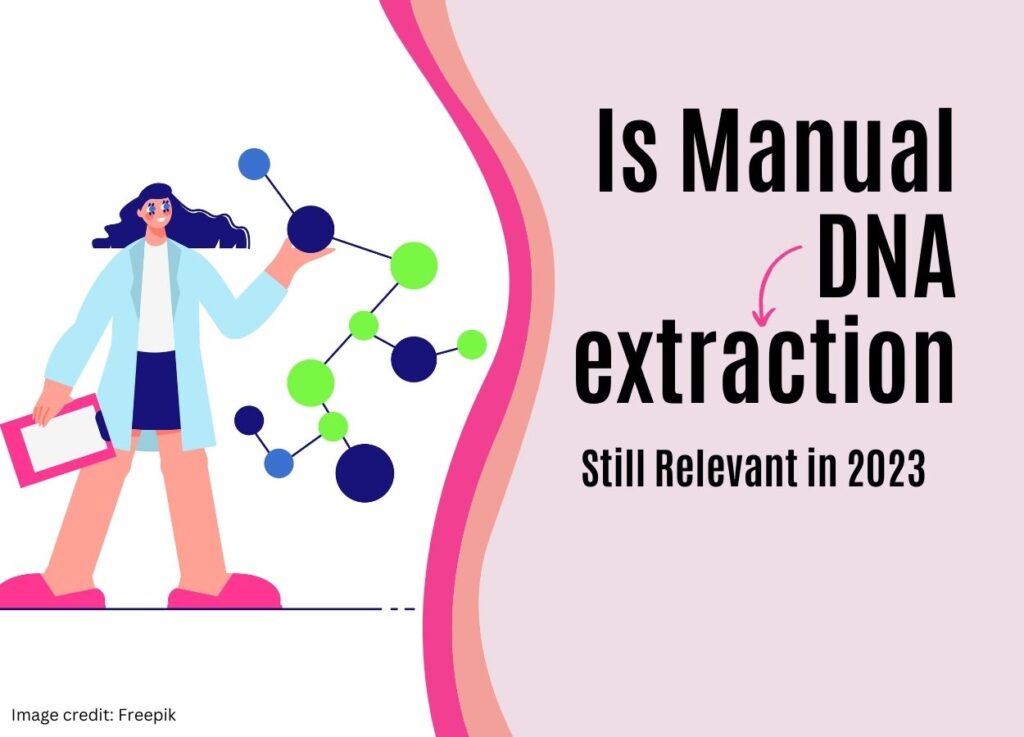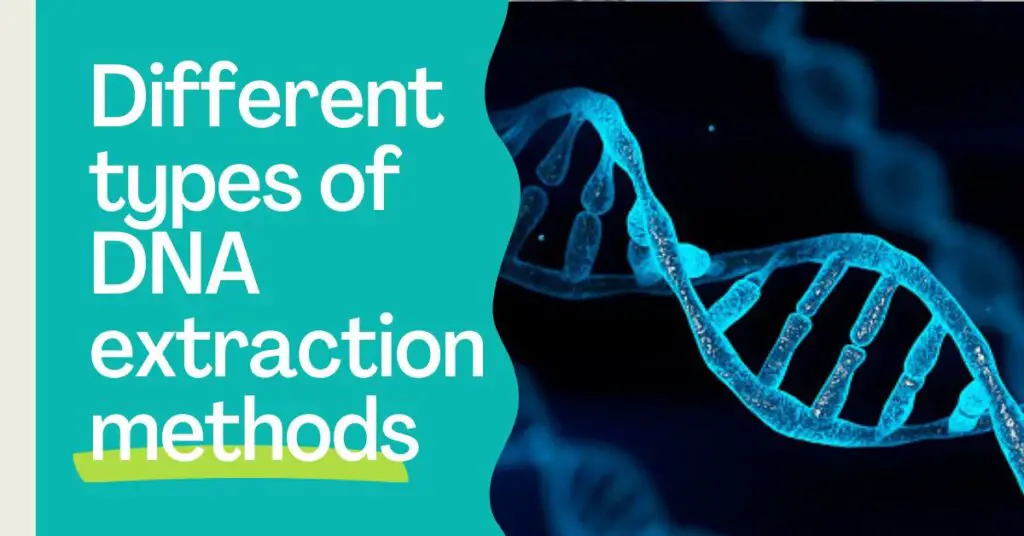“Manual/traditional DNA extraction schemes use chemicals, salts and other reagents, which makes the entire process tedious, time-consuming and laborious. However, it is relevant and accepted. Here is my call on “Are such methods still relevant in 2023?”
If we answer the present question in one line, then, “it depends on who uses it.” For commercial setups– it may not be, but for students and researchers, it is! However, we have to look for reasons on both sides and for both extremes.
DNA isolation is a crucial scheme in genetics and genomics (both are now totally different fields, remember). In fact, a basic and must-opt procedure to kick-start any procedure in either field.
So it’s an irreplaceable requirement, not in 2022 but in 2023 and in upcoming years. Scientists have used isolated DNA since 1960 but timely optimization, new discovery and protocols made it more effective.
We have some data-driven catch-ups and expert opinions on this topic. Starting from the very basics, we will look at each point one after another and will make our conclusion. Stay connected with the article.
Key Topics:
Manual DNA extraction Basics
Manual Nucleic Acid isolation, as aforementioned, is conventional or traditional technique. The first DNA isolation attempt was made by Friedrich M in 1869 and then after, thousands of optimizations and new schemes emerged.
| Sr No | Manual method | Application |
| 1 | Phenol chloroform and isoamyl alcohol | DNA extraction from blood. |
| 2 | Proteinase K | DNA extraction from blood, bacteria, AF, CVS, plant samples and others. |
| 3 | CTAB extraction | DNA extraction from plant samples |
Recent technologies in the field of nucleic acid extraction use totally different chemistry and technology and thus have the utmost benefits over manual methods. Those, mostly are spin-column and magnetic beads-based technology.
However, manual methods highly rely on chemicals, salts and solutions, and thus extensive pre-preparations are required. The technician has to make many chemicals and prepare solutions before the experiment.
Still, the synchronized process from pre-preparation to validation takes a day. That’s a huge amount of time. Hence, for larger setups, the process is unrealistically time-consuming.
Conventional DNA extraction relies on the principle of separation of nucleic acid using either chemicals or salts. The combined effect of various lysis solutions lyses the cell wall/ membrane and nuclear envelope to extract the DNA.
In the very next step, processes like centrifugation and treatments like chemical or salting out help to collect fresh DNA precipitates. DNA needs to be dissolved in the TE buffer at the very end of the experiment.
In our previous article, I explained the principle, steps and process of DNA extraction comprehensively; you should have to read that article to learn more: Different types of DNA extraction methods.
PCI, proteinase K and CTAB methods are popular manual DNA extraction schemes in molecular biology and are well-established and available. To answer the present question we have to look at the pros and cons of the manual type of DNA extraction techniques.
Look at this illustration to further understand what techniques are categorized into manual methods.

Advantages of manual DNA extraction
Techniques like PCI, proteinase K and CATB are assay specific. What does it mean? Depending upon the requirements of the assay we can optimize our protocol and achieve great results.
Experiments like conventional PCR and restriction digestion require high-yield DNA around 30 to 50 ng but for repeat experimentation, we need approx. 250- 500µg of total DNA. Proteinase K like techniques produce high-yield DNA.
On the contrary, kit-based techniques are low-yield methods but produce highly pure DNA. Keep in mind we are discussing the scenario for the blood DNA extraction.
In addition, such manual methods also provide great value as it gives excellent purity too. The purity level of manual methods like phenol: chloroform and isoamyl alcohol is unmatched, if performed, optimized and prepared for each chemical, well.
Furthermore, It gives flexibility for optimizing the experiment depending on the requirements.
Manual methods like PCR, proteinase K and CTAB are super cheap which is the crucial factor here.
Limitations of manual DNA extraction methods
Contrary to the unmatched advantages of such techniques over ready-to-use kits, there are some shortcomings that seriously limit its use. Here are some.
It’s obvious, we all know that manual methods are time-consuming processes.
Manual methods require extensive pre-preparation like chemical preparation, solution making and pH regulation, which makes it tedious and laborious. For example, to perform the PCI methods, it takes 72 hours for preparing the saturated phenol solution for the experiment.
In some experiments, it takes around 24 hours to dissolve the DNA. All these procedures are time-consuming and laborious.
Susceptible to errors is yet another downfall. Manual techniques are more prone to errors, misleading or dissolving our results, greatly. Meaning, if the pre-preparations are not well we will not get the results.
Lastly, it requires a large number of samples to isolate DNA.
Hey If you want to master your DNA extraction, electrophoresis and PCR skills you can buy our handbook: From DNA extraction to PCR.
Conclusion:
So what conclusion can we draw from this discussion? Are such methods still relevant and useful?
Yes.
Students and researchers have a very low budget for their projects. And hence they can’t afford ready-to-use kits. In addition, in research in which we need more yield to optimize and repeatedly perform experiments, we need a higher amount of DNA.
Using only manual methods, we can achieve such yield. As I already said, controlled and optimized extraction results in insane purity and so both the objective to achieve yield and purity can be fulfilled using manual methods.
Universities, research organizations and students are the biggest markets for DNA extraction, but they mostly use optimized and cheaper techniques like chemical or salting out methods.
On the other hand, in the diagnostic setup, as the ready-to-use kits provide more trustable and fast results, they use it. Still, some setups use manual methods. In conversation with Dr Jigar Suthar and Tushar Kachhadiya, who belong to the private diagnostic industry, said that they are still using manual methods.
They have their own standard protocols to extract DNA from some common samples like blood or plant tissues. However, they purchase some solutions and chemicals to reduce pre-preparation time.
So conclusively, we can strongly say that manual methods like chemical, solvent or salt-based DNA extraction methods are still relevant and will remain useful and applied in upcoming times too.
Subscribe to our weekly newsletter for the latest blogs, articles and updates, and never miss the latest product or an exclusive offer.




